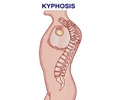Scientists have identified an underlying cause of dangerous immune suppression in people with high level spinal cord injuries and they propose a possible treatment.

‘Chemogenetic silencing - manipulating receptors that are on the surface of cells and silencing them - reverses the immune suppressive reflex in spinal injured mice.’





The researchers show that in mouse models of spinal cord injury, this aberrant nervous system circuitry causes responses that extend beyond thoracic spinal segments, which in uninjured mice would normally feed nerves to secondary lymphoid tissues that help generate immune cells. Because of this, abnormal spinal interneurons are activated by the bladder and/or bowel. This results in formation of an exaggerated network of neural circuitry that activates an anti-inflammatory and immune suppressive reflex. "Infection, a consequence of immune suppression, is the leading cause of death for people with spinal cord injuries," said Yutaka Yoshida, co-lead author and a scientist in the Division of Developmental Biology at Cincinnati Children's. "Patients and mouse models of spinal injury also are subject to autonomic dysreflexia, a potentially fatal clinical syndrome marked by episodes of high blood pressure."
In the study, mouse models of high spinal cord injury have atrophied spleens (a secondary organ that produces white blood cells) and show signs of leukopenia (low white blood cell count).
Co-lead author Phillip Popovich, professor of Neuroscience and director of the Center for Brain and at Ohio State, said that this abnormal spinal cord circuitry likely causes chronic immune suppression and increases the chance that people with spinal cord injuries will suffer from complications caused by common infections, such as pneumonia.
In an effort to develop a possible treatment to stop immune suppression syndrome, the researchers tested chemogenetic agents in their laboratory mouse models. Chemogenetics involves manipulating receptors that are on the surface of cells and either activate or silence these cells. The use of chemogenetics creates the ability to exert very selective pharmacologic control over a variety of cell-signaling processes.
Advertisement
Chemogenetic silencing reversed the immune suppressive reflex in spinal injured mice. Atrophy in the animals' spleens was reversed and white blood cell counts increased, the researchers report.
Advertisement
Source-Newswise















